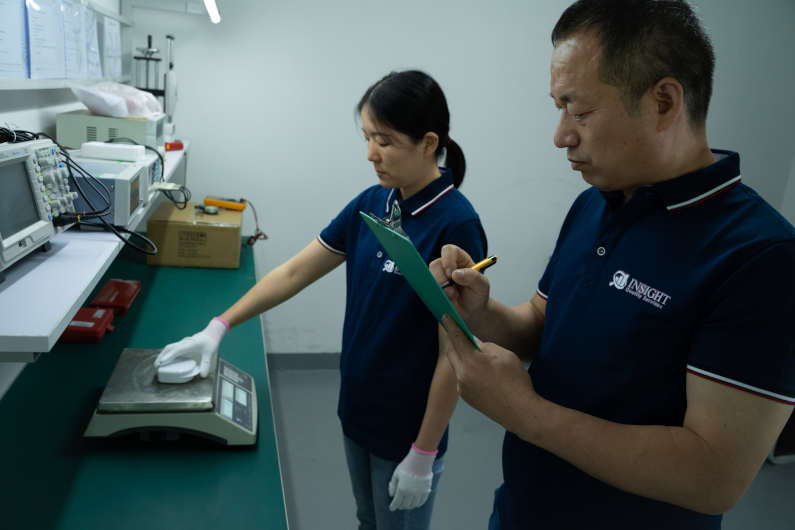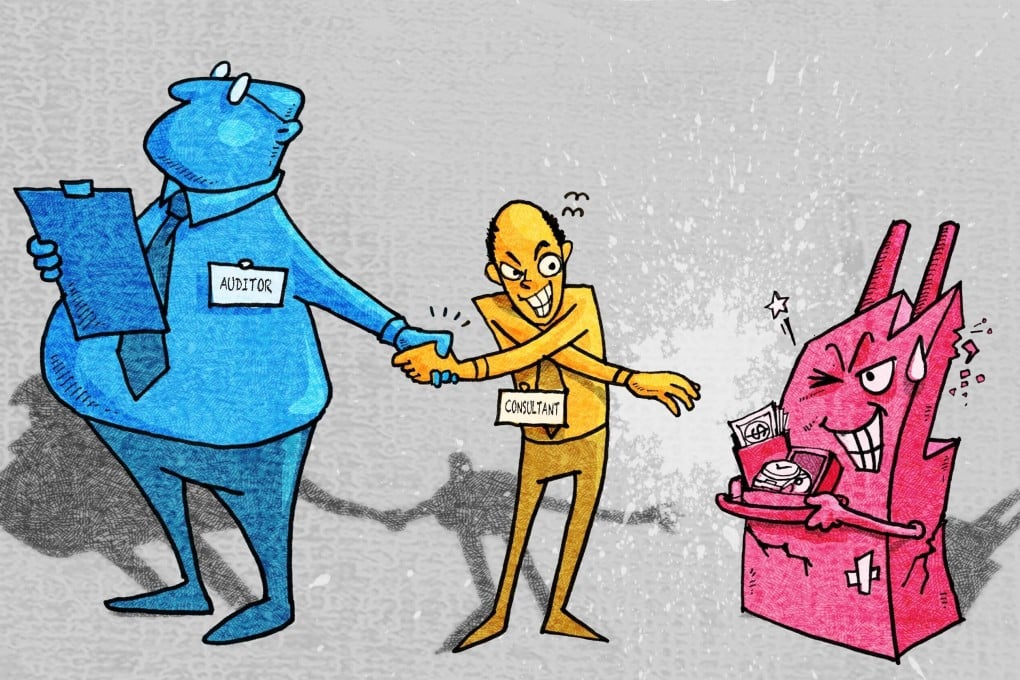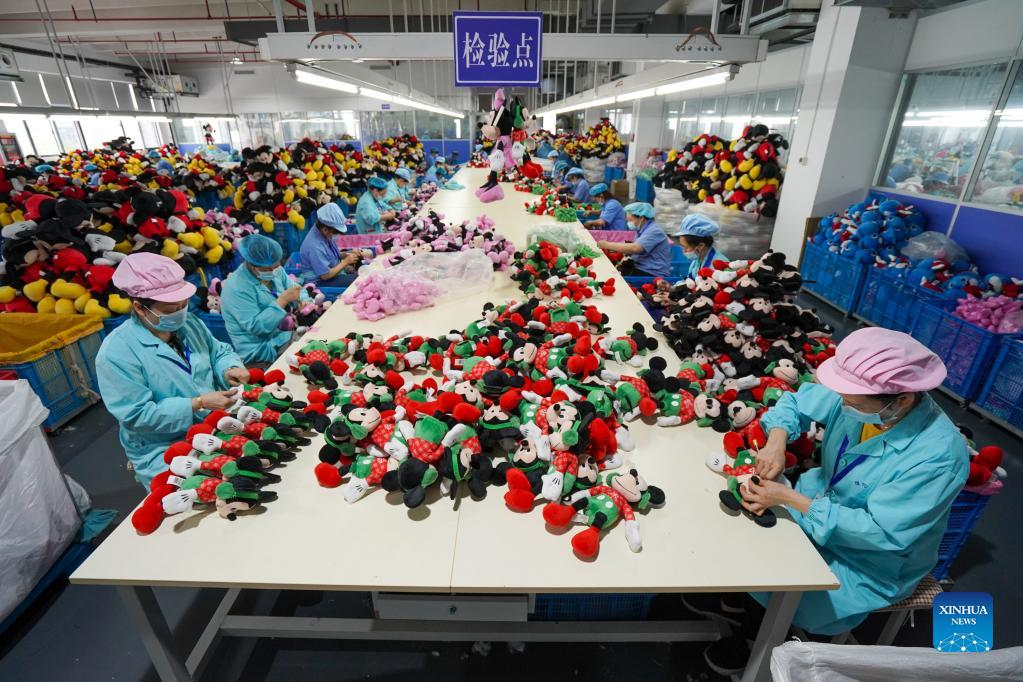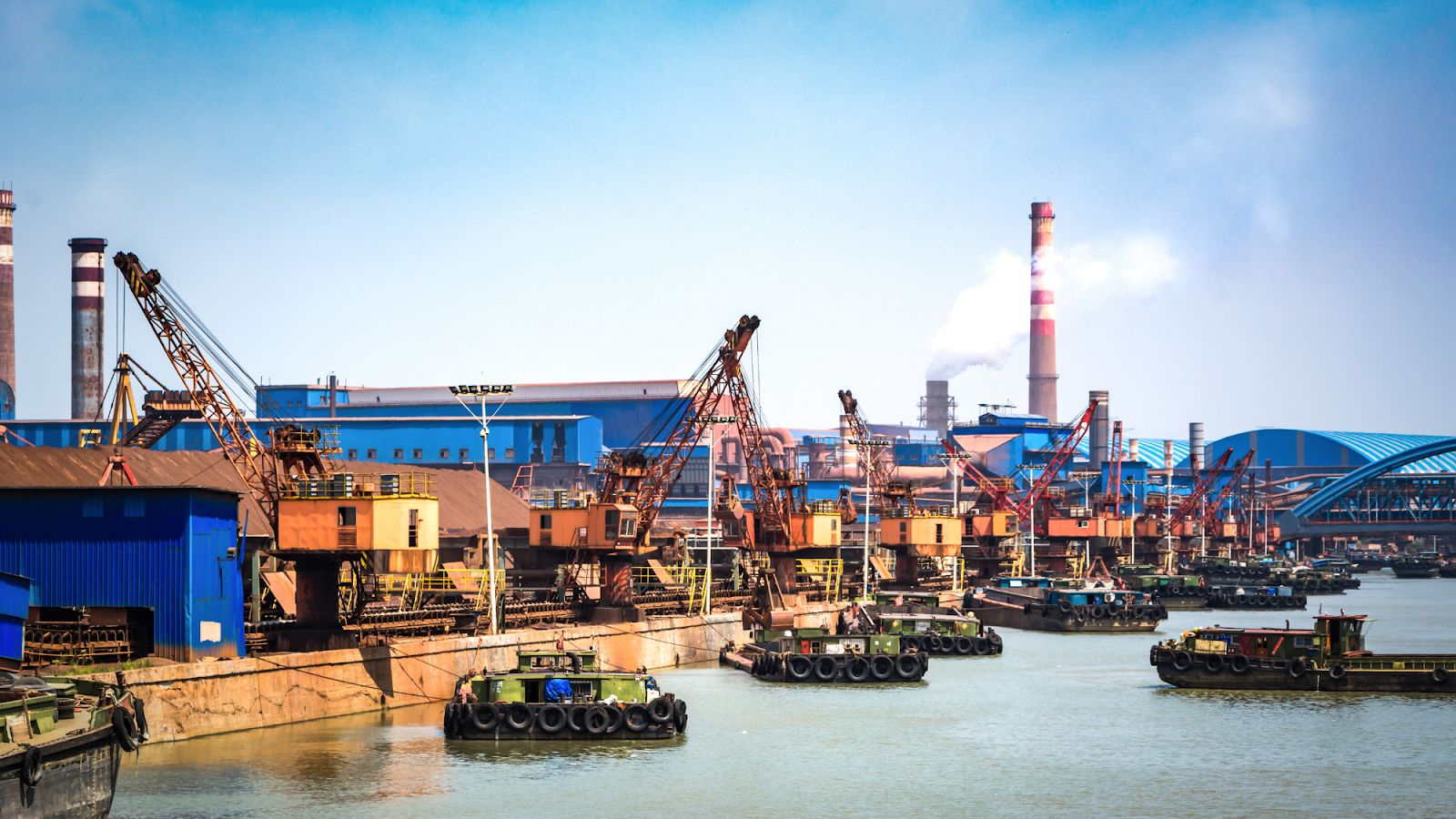
Red Flags to avoid in factory vetting in 2025
Facing unprecedented convergence of tariff pressures, compliance risks, and supply chain imperatives that demand immediate strategic repositioning, does it still make sense to rely on China for manufacturing in 2025?
With 30% tariffs on Chinese toys, systematic manufacturing fraud reaching 85% of U.S. recalls, and Southeast Asian alternatives maturing rapidly, the decisions made in Q4 2025 will determine which brands survive the decade. The window for diversification closes as competitors secure limited capacity in Vietnam's expanding toy manufacturing ecosystem, where we - Play Trail - are here to help as an essential partner for brands seeking compliant, cost-effective production outside China's grip.
The red flags to watch out for when vetting for a new factory in China
Fake certificates and audit manipulation threaten legal liability

The biggest risk facing toy brands is systematic certification fraud - a "cottage industry of consultants" throughout China's industrial heartland helping factories pass audits through sophisticated deception. A South China Morning Post investigation documented consultants offering services including coaching workers on auditor responses, providing modified record books, arranging "friendly auditors," and software generating complete documentation for fake workers in 90 seconds. One Shanghai consultant stated directly: "As long as you cooperate and keep troublemakers out on inspection day, we guarantee you pass."
Of 87 toy recalls analyzed in congressional reports, 74 (85%) were Chinese-manufactured products. The FDA issued February 2024 alerts about "an increase in submissions containing unreliable data generated by third-party test labs, including from numerous facilities based in China," stating the agency cannot rely on such data for marketing authorization.
Certificate red flags include missing unique identification numbers, testing dates misaligned with production timelines, and certificates from non-CPSC-accepted laboratories for children's products. The financial stakes are severe - CPSC can impose penalties up to $100,000 per violation, with average recall costs ranging $500,000 to $5+ million depending on volume.
To avoid this, brands must implement rigorous verification protocols: directly contact testing laboratories, conduct unannounced factory inspections with rotating inspectors, and randomly re-test products etc. But that translates to more spending of resources, time and manpower.
Quality control failures drive the recall epidemic

Chinese-manufactured goods account for 52% of all CPSC recalls (168 of 323 total in 2023), with Notice of Violations for Chinese toys increasing from 645 in 2009 to 1,724 in 2023 - a 167% increase. Recent plush toy recalls illustrate systematic quality failures: Mary Meyer Bubba Bull plush toys (December 2023) with detachable eyes posing choking hazards, Shawshank LEDz Squeeze Plush Ball Toys (August 2024) with rupturing membranes splashing liquid onto children's faces, and Fisher-Price Baby Bicep Dumbell Toys with detachable gray caps prompting hundreds of thousands of units recalled.
The "quality fade" phenomenon explains this pattern - AsiaInspection analysis found 26% of made-in-China products were manufactured outside quality specifications as manufacturers cut corners post-approval to increase profits. For plush toys specifically, critical defects include components failing tensile strength testing, lead content exceeding 100 ppm in accessible components, weak stitching allowing stuffing exposure, and non-compliant fabric flammability.
Intellectual property theft operates at industrial scale

China represents the global epicenter of toy counterfeiting, with 80.6% of toy-related counterfeit shipments seized by U.S. Customs in FY 2022 originating from China or Hong Kong. Chinese IP theft costs American businesses $225-600 billion annually according to the U.S. Trade Representative. Stanford Law School Professor Paul Goldstein identifies structural causes: "IP theft is not simply longstanding Chinese government policy; it is an inherent feature of the Chinese Party-State-Economy."
Recent enforcement actions demonstrate the scope: In December 2020, U.S. Customs seized 141,112 counterfeit UNO card games, 9,600 LOL Surprise toys, and 1,980 capsule toys from China with an authentic MSRP of $1.3 million. A 2013 criminal case resulted in five individuals and five corporations charged with 33 separate seizures of hazardous and counterfeit toys, with assets including Porsches and Lexuses seized.
Tariff uncertainty creates November 10 cliff for holiday margins
The toy industry faces its most volatile tariff environment in decades. As of October 2025, Chinese toy imports face 30% tariffs (10% baseline + 20% fentanyl tariffs) under a 90-day truce extended to November 10, 2025. This represents dramatic escalation from complete exemption - toys were specifically excluded from Section 301 tariffs during Trump's first term (2018-2020) but lost this exemption in 2025.
The year's tariff rollercoaster demonstrates policy volatility: February 4 saw 10% fentanyl tariffs imposed, March 4 increased to 20%, April 2-9 escalated to 145% total (combining reciprocal, fentanyl, and baseline tariffs), before May 12 reduction to 30% under Geneva agreement. The April crisis prompted Toy Association surveys revealing nearly 50% of small/medium toy companies may go out of business, with toy prices jumping 2.2% in May 2025 - the largest monthly increase on record.
Market dependency makes alternatives limited: 75-80% of U.S. toy imports come from China ($13.4 billion of $17.7 billion total), with unique infrastructure advantages including 40+ years of specialized expertise, capacity for hand labor (painting doll faces, assembling complex toys), and established safety compliance infrastructure. MGA Entertainment CEO Isaac Larian stated bluntly: "Americans do not want to work in factories," with domestic production requiring 5-7 years to build comparable infrastructure.
November 10 presents three scenarios: extension maintains 30% rates (manageable with pricing actions), reversion to 54% triggers significant margin compression, or return to 145% causes widespread business failures. .
Southeast Asian manufacturing: Vietnam leads maturing alternatives

Vietnam has emerged as the primary China alternative, with toy exports reaching $3.76 billion in 2024 and strong growth in Mexico, Brazil, and France. The country ranks as the third largest toy supplier to the U.S., though it was hit with 46% tariffs during April 2025's peak uncertainty (Indonesia 32%, India 26%). Despite temporary tariff concerns, Vietnam offers compelling structural advantages.
Manufacturing infrastructure is expanding rapidly: LEGO initiated construction of a 44-hectare factory in Binh Duong province anticipated to become fully operational in 2025, expanding the supply chain and driving sales growth in Vietnam and Asia-Pacific. GFT Group operates five production facilities in northern Vietnam employing over 15,000 workers, producing for major brands including Takara Tomy, Hasbro, Spin Master, and Mattel. Dream International, the world's largest plush toy manufacturer, operates 19 production facilities in Vietnam versus four in China, positioning them advantageously for brands diversifying supply chains.
Trade agreements provide significant advantages. Vietnam's participation in the Comprehensive and Progressive Agreement for Trans-Pacific Partnership (CPTPP), effective January 14, 2019, eliminates tariffs for 95-100% of goods from CPTPP members including Canada, Japan, Australia, Mexico, and Peru. The EU-Vietnam Free Trade Agreement (EVFTA) provides preferential access to European markets. These agreements offer duty-free or reduced-tariff access to major markets that Chinese exports cannot match under current tariff regimes.
Vietnam's manufacturing capabilities span the full toy spectrum: wooden toys, plush items emphasizing natural materials, plastic toys, electronic gadgets, and educational toys. Labor costs remain competitive at $4-6/hour versus China's rising rates, while literacy rates and manufacturing education support quality production. The Southeast Asia Toy Association (SEATA), founded by leading brands including Mattel and LEGO, provides infrastructure supporting factory compliance and capability development. The Ethical Toy Program opened a Ho Chi Minh City office in 2024, hiring dedicated team members for on-the-ground factory support and compliance training.
Indonesia and Thailand present secondary options. Indonesia's large workforce and lower labor costs support specific product categories, though the country exported toys valued significantly below Vietnam in 2024. Thailand's toy market benefits from strong domestic consumption and Pop Mart's explosive success (single-day sales exceeding $1.4 million), though the aging population (over 20% aged 60+) limits long-term workforce growth. Both countries offer skilled labor for toy manufacturing within SEATA's expanding ecosystem.
We also recognize the undeniable constraints: Vietnam's toy sector spends just 0.27% of GDP on higher education (versus China's 1.12%) and 0.4% on R&D (versus China's 2.4%), limiting capacity for highly complex manufacturing. Lead times extend to 30-45 days for standard products, and raw material sourcing often requires imports from China. However, mid-volume orders (5,000-30,000 units) represent the sweet spot for Vietnamese suppliers, with highly automated or extremely high-volume production remaining China-dependent.
Play Trail Partnership - Strategic imperatives for immediate action
The three red flags examined in this analysis - certification fraud, quality control failures, and intellectual property theft - are not isolated incidents but systematic features of China's manufacturing ecosystem that tariffs alone cannot solve. Moving production to Southeast Asia represents the most effective strategy for eliminating these risks while simultaneously addressing the 30-145% tariff uncertainty that threatens Q4 margins and beyond.
Escaping the certification fraud trap. China's "cottage industry" of audit consultants who coach factories to deceive inspectors and generate fake documentation in 90 seconds exists because the scale and fragmentation of Chinese manufacturing creates information asymmetry that's nearly impossible to overcome. Southeast Asian manufacturing ecosystems, particularly Vietnam's emerging toy sector, operate at a smaller scale with greater transparency. Specialized sourcing partners like Play Trail leverage this advantage through pre-qualified factory networks where baseline compliance verification has already occurred - eliminating the dangerous guesswork that leads 85% of recalled toys to originate from Chinese manufacturers.
Solving the quality fade crisis. The 167% increase in Chinese toy violations since 2009 and the 26% defect rate documented by AsiaInspection reflect systematic incentives for corner-cutting once initial orders are secured. Vietnamese and Indonesian manufacturers competing for market share from established Chinese suppliers cannot afford the quality fade that plagues mature Chinese factories. Their competitive positioning depends on delivering consistent quality that justifies brands' diversification investment. Moreover, Southeast Asian manufacturers partnering with groups like the Southeast Asia Toy Association (SEATA) and the Ethical Toy Program's new Ho Chi Minh City office benefit from structured compliance training and capability development programs specifically designed to meet Western safety standards - infrastructure that emerged only after decades of recalls exposed gaps in Chinese manufacturing culture.
Protecting intellectual property through geographic diversification. China's structural IP theft problem - costing American businesses $225-600 billion annually - stems from Party-State policies that Stanford law professors identify as "inherent features" of the Chinese economy. No amount of NNN agreements or CNIPA registrations can overcome institutional incentives for counterfeiting when 80.6% of seized counterfeit toys originate from China or Hong Kong. Shifting production to Vietnam, Indonesia, or Thailand fundamentally changes the risk calculation. These countries lack China's massive counterfeiting infrastructure, established distribution channels for fake goods, and institutional tolerance for IP violations. A Vietnamese factory producing 50,000 plush units has neither the incentive nor the ecosystem to manufacture unauthorized additional units for gray market distribution - whereas this represents standard practice across China's Pearl River Delta manufacturing regions.
The tariff argument reinforces geographic imperatives. While November 10's tariff decision will significantly impact margins, the deeper strategic insight is that tariff volatility itself represents policy recognition of the systematic risks documented in this analysis. The 145% peak rate in April 2025 wasn't arbitrary - it reflected accumulated frustration with certification fraud, quality failures, IP theft, and fentanyl precursor exports that toys' prior Section 301 exemption had ignored. Even if tariffs moderate, the structural problems driving policy volatility remain. Brands that diversify to Southeast Asia gain tariff advantages (Vietnam's CPTPP and EVFTA agreements provide preferential access to major markets) while simultaneously eliminating the compliance and IP risks that created tariff pressure in the first place.
The toy industry's China dependence - 75-80% of U.S. imports - was built over 40 years and won't unwind overnight. But the convergence of 30% baseline tariffs, 85% recall rates from Chinese manufacturers, systematic certification fraud, and mature Southeast Asian alternatives creates an inflection point where inaction carries greater risk than transition costs. Brands that secure Southeast Asian capacity (especially Vietnamese and Indonesian) in Q4 2025 will enter 2026 with diversified supply chains insulated from tariff volatility, compliance disasters, and IP theft. Those that wait for tariff clarity or hope Chinese manufacturers will reform decades-old practices will find themselves managing recalls, legal liability, and margin compression simultaneously.
Let’s look ahead, Southeast Asian diversification is the only path forward. Contact Play Trail now for your first consultation and we can move forwards together!


Hợp tác với chúng tôi




















